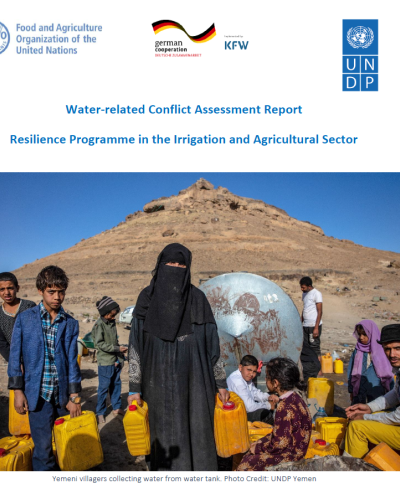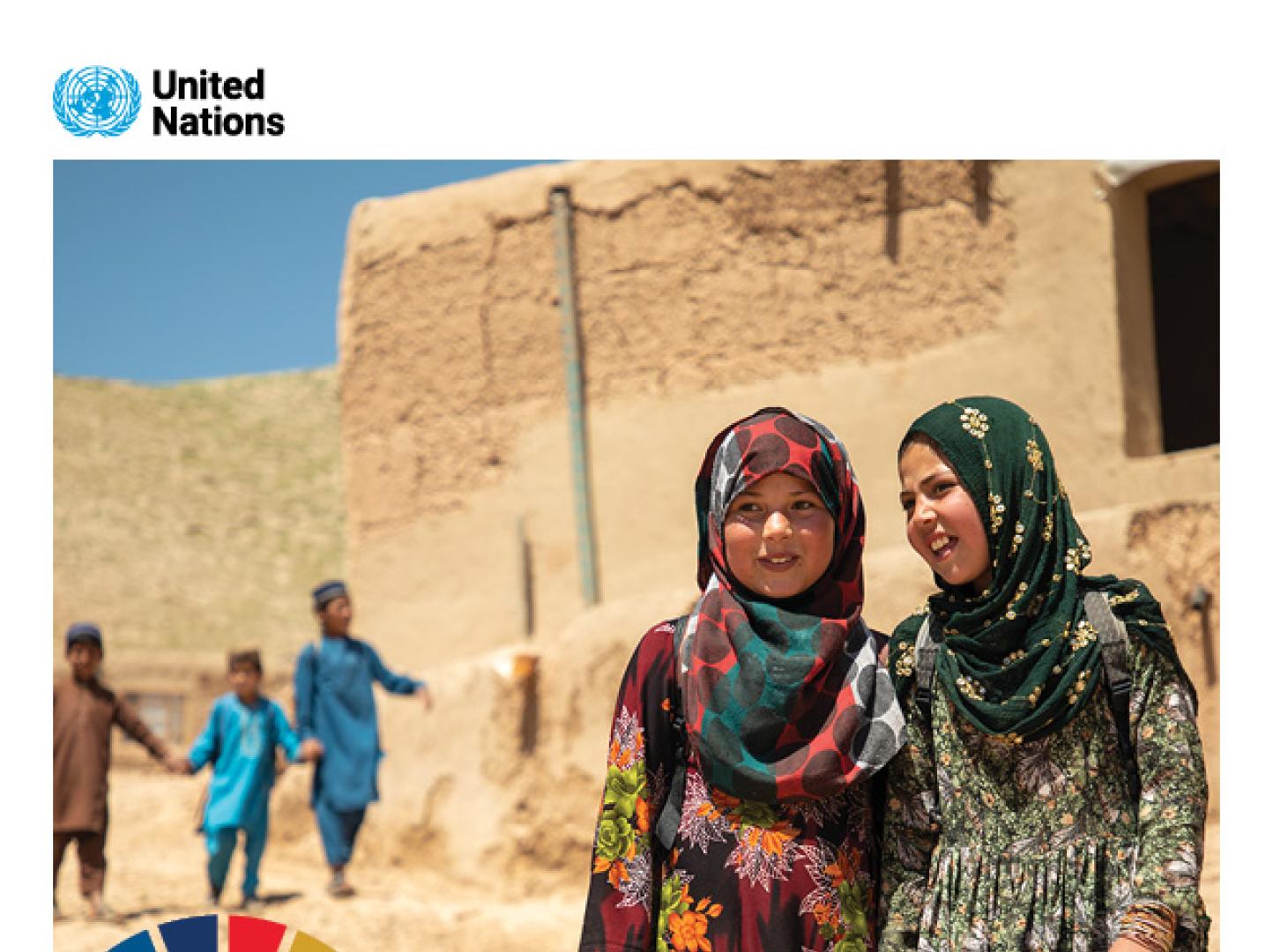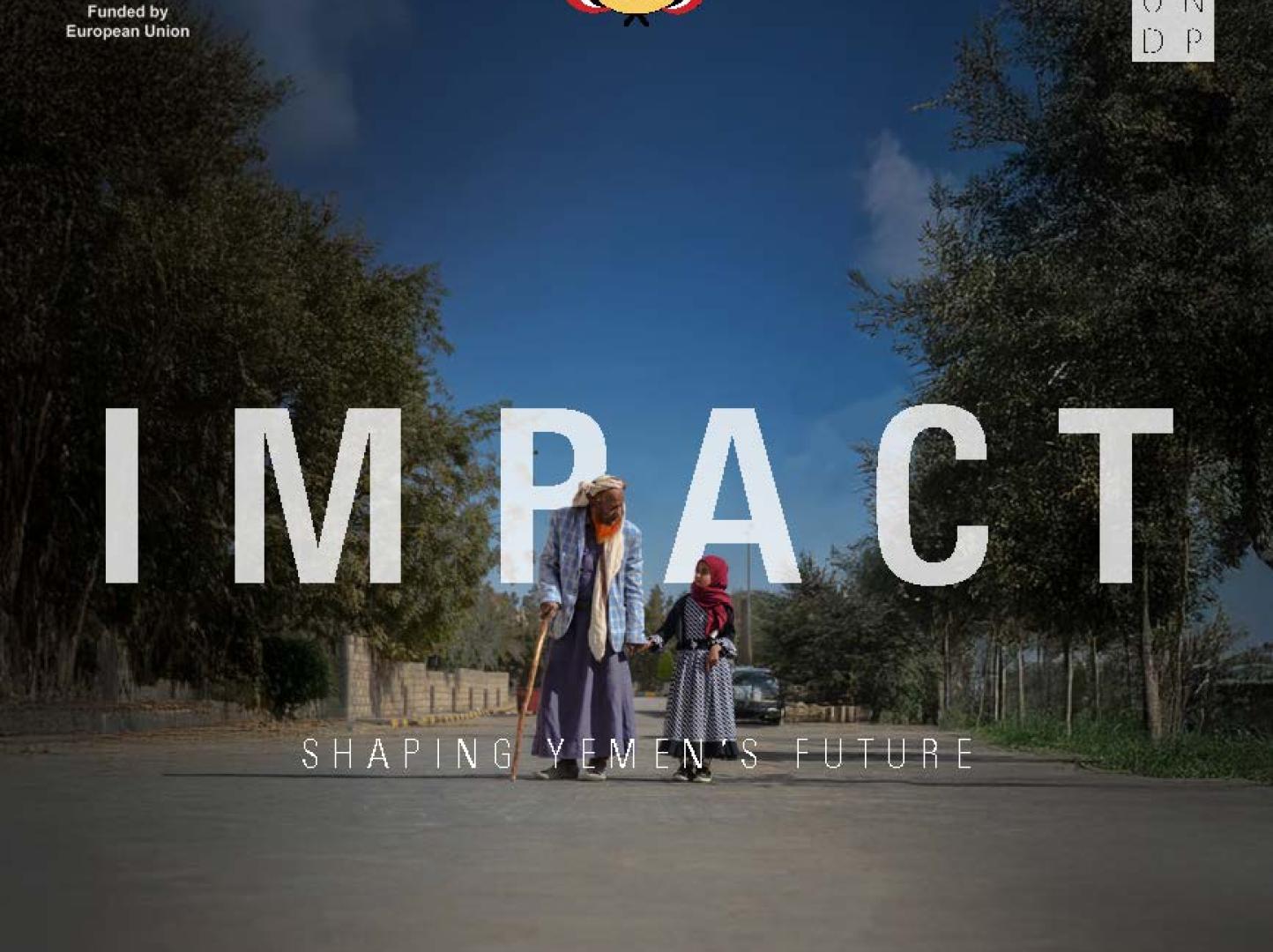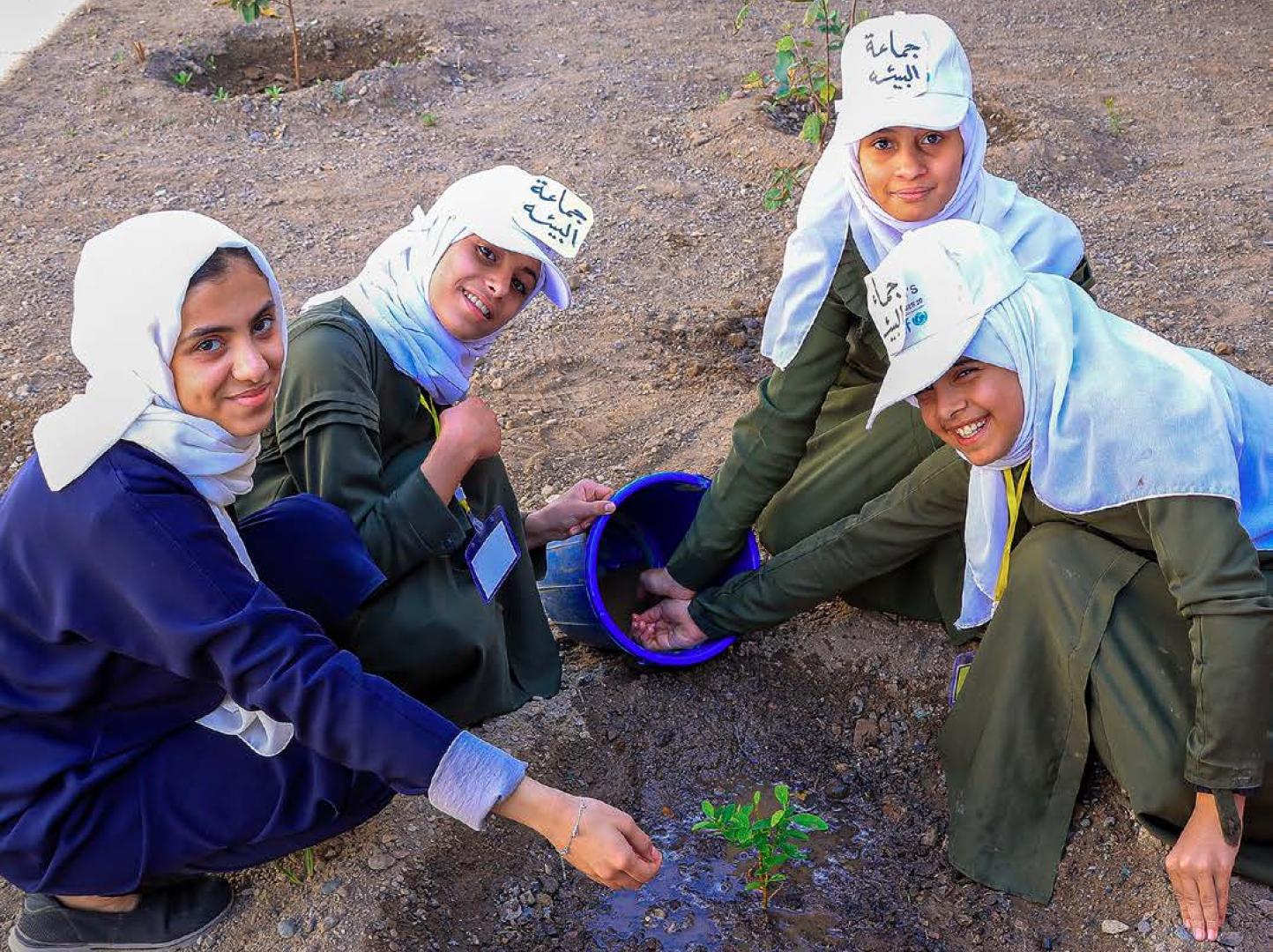Water-related Conflict Assessment Report - Resilience Programme in the Irrigation and Agricultural Sector

Executive summary
This analysis report is a part of the Resilience Programme in the Irrigation and Agricultural Sector project, which is funded by the German Development Bank (KfW) and implemented in Yemen by the Food and Agricultural Organization of the United Nations (FAO) and the United Nations Development Programme (UNDP).
This report is an analysis of water related conflicts of Abyan (Khanfar and Zinjibar districts), Dhamar (Jabal Al-Sharq district), and Hadhramout (Al-Qatn and Shibam districts) governorates, with two main objectives: to build evidence, knowledge and understanding of water-conflicts, and to provide conflict-sensitive programming recommendations, ensuring that unintended negative impacts generated by project implementation are minimised and positive impact generation is maximized.
One useful conceptual framework is the classification of water scarcity in terms of first, second and third orders. First order scarcity is defined as insufficient availability – in quantity or quality – of water resources compared to demandi. Second order scarcity relates to a lack of economic or technical resources required to successfully adapt to the first order water scarcity, and third order scarcity is the lack of social capacity to respond to and change social use and management of water.ii,iii These scarcity orders can be simplified to physical, economic and structural scarcity. Water-related conflicts in Yemen and in each of the five districts under study are investigated in terms of first, second and third orders of scarcity.
Drawing on this analysis, based on published lessons learned, project workshops, key informant interviews, focus group discussions and questionnaires directed at a range of stakeholders, several recommendations are synthesised and summarised here. In order to consider the full detail of the recommendations, please go to Section 5.
1. Which areas of the current project interventions might need to undergo revision given potential risks of fuelling conflict around water?
i. Consider necessary revisions to traditional water rules before implementation in each location.
ii. It is important to fully describe flooding and other water hazards to beneficiary and downstream communities, and supplement ‘hard’ solutions with information sharing, hazard mapping, response planning and other ‘soft’ solutions.
2. Which areas of project interventions are recommended to be strengthened, given their potential to exploit opportunities for stability/peace?
i. Technically and socially, water interventions should consider the whole hydrological system. It is important to analyse, design for, and then clearly articulate to all stakeholders, including downstream stakeholders, what the hydrological impacts of activities will be.
ii. Water user groups, associations and conflict resolution committees involved in this project must become economically self-sufficient to stay active after this project closes. Clear detail on how groups will be sustained are a priority to plan and share.
iii. The provision of irrigation advisory and extension services for Water User Associations (WUAs) and farmers could explicitly share data and knowledge on water resources and build knowledge and capacity on water-related conflict, and mitigation.
iv. To turn awareness raising and extension into behaviour change, there may be opportunities to establish social mobilisation teams, and train them as “champions” or “insiders” for water peacebuilding. These teams should include youth, women and girls.
v. Improving irrigation efficiency is important. Some approaches may be useful, including to implement the lowest technology solutions that will fulfil the aim; start by mapping and developing the support available - including spare parts supply chains and mechanical skills training; provide ongoing support services including dedicated, regular expert visits, farmer field schools and peer to peer learning and continuous knowledge exchange; support technology with activities aimed at behaviour change.
3. Are there areas of intervention that should be included but are not yet considered in the current Project document to ensure greater effectiveness and/or impact of the project?
i. Integrated water resource management (IWRM) and basin-wide planning, monitoring and research are approaches that should be harnessed as far as possible. Some aspects important to emphasise in the project are research and hydrometeorological monitoring including water quality monitoring.
ii. In Yemen, there is often a weak overlap between public and private water management. Conflict analysis and mediation will be different for private, primarily groundwater, and public, primarily spate irrigation, sources and infrastructure. This can lead to different types of water-related conflict issues, and different mechanisms for conflict resolution and mitigation depending on the source of water, and it is important to consider this in planning and implementation.
iii. Existing water resources in Yemen cannot meet rising demand equitably and, likely, peaceably. Therefore, the search for alternative or ‘new’ water sources is important. Developing alternative water should be part of IWRM (3.i).
4. How to better enhance women's contribution to WUAs and water-related conflict resolution.
i. Forming water user groups with a larger proportion of female membership and leadership is an important task in this project, and consideration of how to best raise awareness of the positive outcomes of this adjustment should be emphasised sensitively by project staff and partners who are also well briefed on the topic.
ii. Women could be valuable project “insiders”, peer facilitators or social mobilisation leaders (see recommendation 2.iii).
iii. Water monitoring could be a task that female and young members of WUAs could be trained to undertake (see recommendation 3.i).
iv. Awareness raising at local level is needed to increase recognition of the fact that women can play a role in water-related conflict reduction and mitigation. Training, capacitating and resourcing local NWRA staff to take on this role may be beneficial, particularly if both male and female staff could be involved.
v. It is clear that women will be involved in Cash for Work (CfW), and providing female trainers and facilitators may be useful to ensure female CfW beneficiaries are comfortably supported.
5. How could the proposed activities take an innovative approach in empowering women to play role in resolving conflicts to achieve community-born peace and stability?
i. Female respondents identified several challenges in contributing to WUA, which should be considered:
a. Lack of awareness at community level of how women may play a role.
b. Weak awareness of women’s contributions and activities by central, regional and district institutions.
c. Absence of the state and lack of larger projects and activities in the women's sector at local levels.
d. Poverty and poor family financial situations.
e. Lack of time. Respondents reported that 60 per cent to 70 per cent of agriculture work is carried out by women in addition to their responsibilities as housekeepers, breeding livestock, taking care of their children and other household obligations.
ii. When providing training and capacity building for reactivated or new groups, it would be useful to ask female members if they wish for specific training that may be additional to or different in some aspects from that provided to the men.
iii. Outside formal groups, there may be opportunities to establish social mobilisation teams, and training them as “champions” or “insiders” for water peacebuilding. Women and girls could be trained as social mobilisers in order to contribute to water-related conflict mitigation in a formal or A discussion of physical, economic and structural water scarcity in Yemen has demonstrated that the project Resilience Programme in the Irrigation and Agricultural Sector has a strong component aimed at reducing water-related conflict and improving water management through awareness-raising and disaster preparedness at the local level.
In the conflict-affected, poverty-ridden and complex context of rural Yemen, it is not possible to guarantee that no water-related conflicts will be exacerbated by international projects. However, in implementing the Resilience Programme in the Irrigation and Agricultural Sector, an outcome of more peaceful water sharing is far more likely in all project districts.





